In this article, we’re going to explain the basics of internal wikis, tell you how you can benefit from implementing one in your own team or company, and even provide you with the steps you need to take to build a robust wiki with the help of quality software and the collective brainpower of your own team!
But we’re getting ahead of ourselves.
First thing’s first: let’s demystify this trendy buzzword.
What Is an Internal Wiki?
A team wiki is a digital space where you share your company knowledge, similar to a knowledge base (KB).
However, unlike a KB, a company wiki is a place that encourages employees to participate.
If the concept seems foreign, just think about Wikipedia, the most famous wiki globally.

Source: Wikipedia
It’s a collaborative encyclopedia of sorts where anyone with an internet connection can contribute their insights.
No matter what term you look up on the internet, you’re bound to get a Wikipedia article as a search result, proving just how vast and extensive the collected knowledge is.
This type of knowledge format can and does work for companies. In fact, the very first wiki was WikiWikiWeb, a KB used for company software engineering.
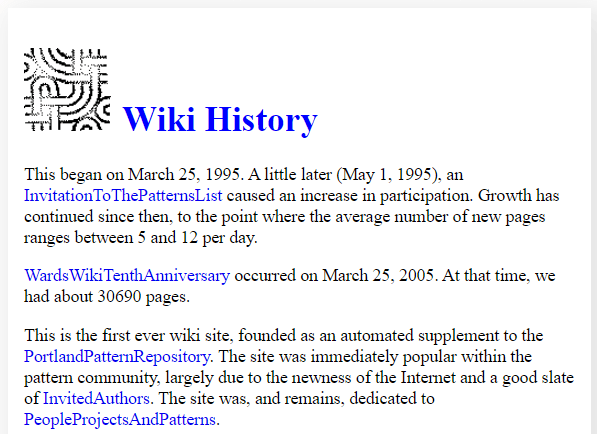
Source: Wiki
It was published in March of 1995, which means wikis have been around for a while now—yet companies rarely realize the full potential of such knowledge repositories.
What Type of Content Can You Store in Your Internal Wiki?
Internal wikis should be a universal source of information for your company.
Therefore, you can use it for any kind of company-related information, from onboarding materials and employee handbooks, to schedules and important company-wide updates.
Usually, company wikis include:
- How-to articles
- Product documentation
- HR rules and policies
- Training materials
- Meeting notes
- Team information
- Procedures
On top of these valuable docs, you can add anything you want your team to be aware of.
For example, Bolt, a fintech company, published their culture book online to share their mission and values with the world.
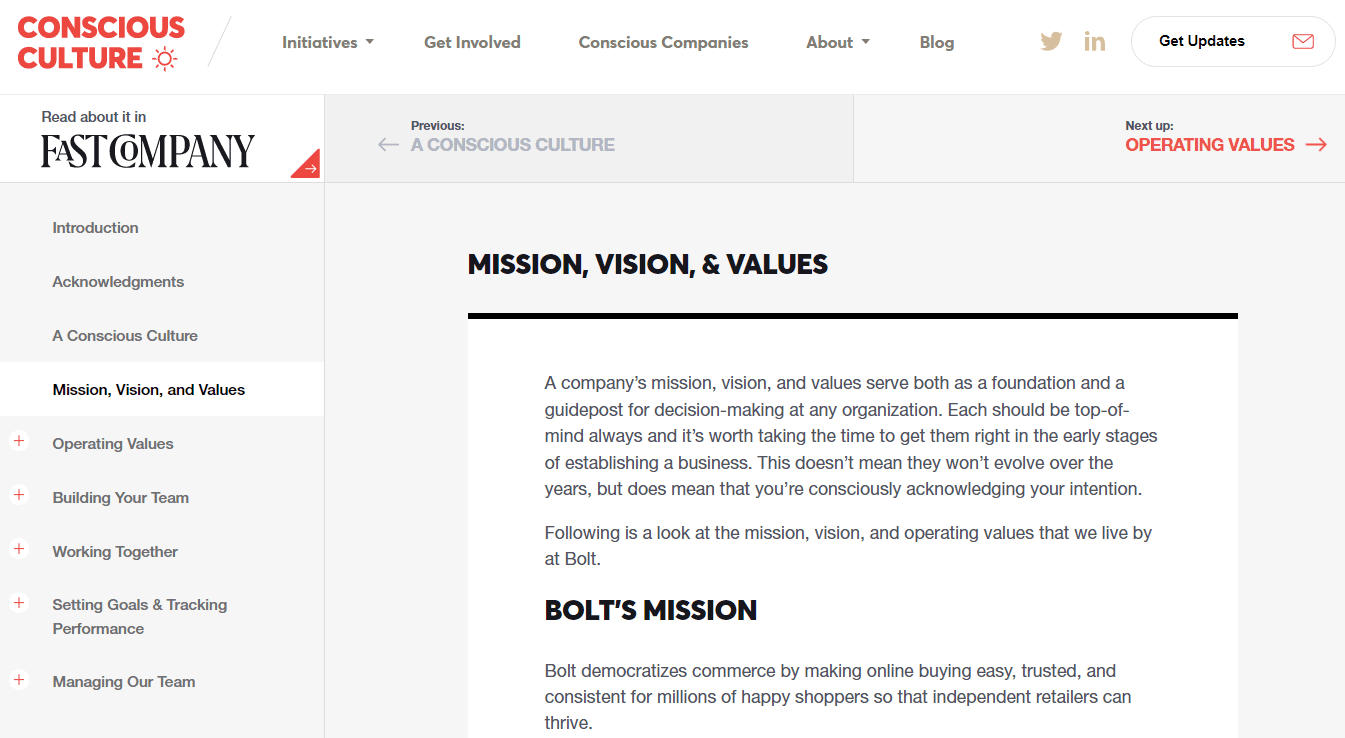
Source: Conscious
They stress the importance of company values and culture throughout the content, even dedicating a section to their mission, vision, and values.
Why not follow their example and include the values you find important in your wiki?
Chances are you already have a lot of documentation in digital form, saved in different files which aren’t accessible to all employees.
With good wiki software, you can import internal documentation and keep it in the same shared space, no matter the content type.
Documentation software has progressed a lot and nowadays offers different features, like creating software documentation directly in the KB, sharing it with your team and customers, or creating embedded documentation in other apps.
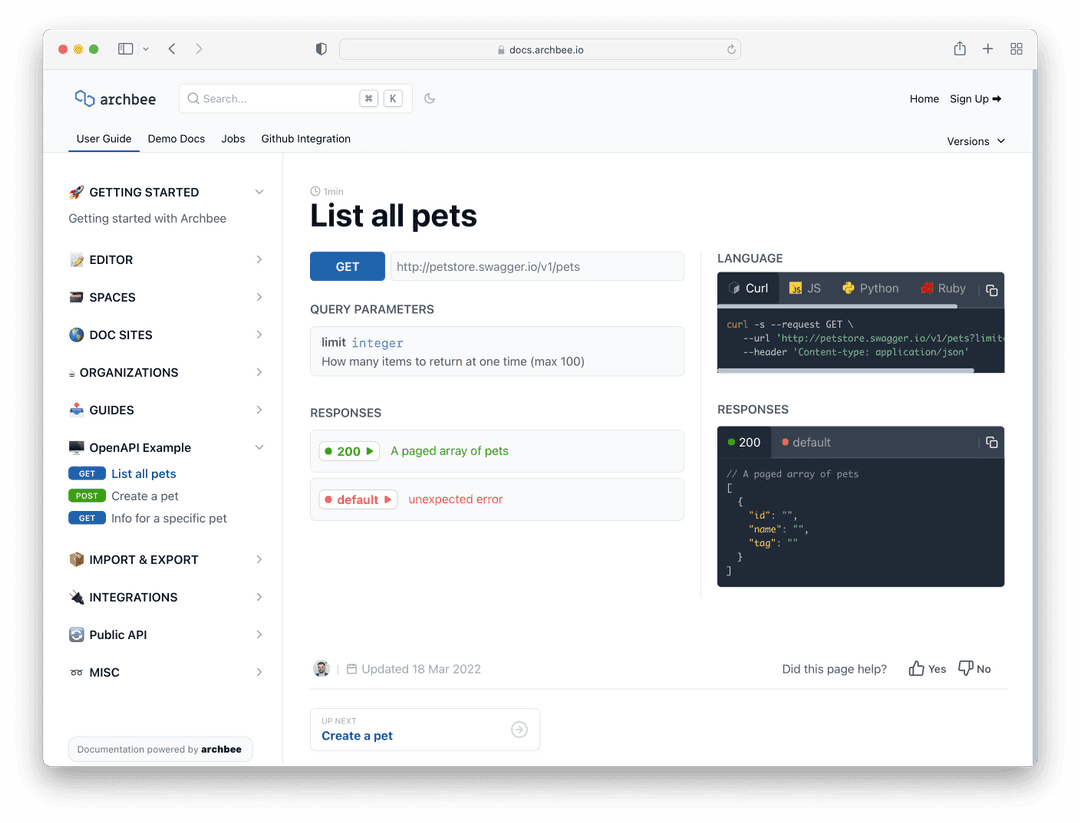
Source: Archbee
With these features, you’ll be able to create and keep all the content you need in the same place, preventing versioning issues where documents, sent via email or apps, are edited and updated until no one can tell what the official version is.
To prevent this type of insight loss, opt for software that supports the documentation you use, such as different coding languages or at least one that lets you import files.
What Are the Benefits of Having an Internal Wiki?
Rome wasn’t built in a day, and neither are internal wikis.
Clearly, you’ll have to invest some money and a lot of time into creating a knowledge source that works for your company and promotes a knowledge-sharing culture.
But, it will be worth your while. Let’s see how!
Better Collaboration
An excellent internal wiki will help promote collaboration, directly affecting employee engagement, productivity, and customer satisfaction.
The whole point of a wiki is to encourage knowledge sharing. All team members should feel free to comment on other people’s posts, ask additional questions, or suggest their solutions to known issues.
In an environment like that, you’ll most often get the best possible idea because employees will build a solution based on other people’s previous suggestions. This building is only possible if you allow the team to collaborate.
After you compile product documentation, including instructions on using your product and possibly troubleshooting it, you can share it with your external partners and clients.
Software like Archbee allows you to do this seamlessly, straight from the app itself, allowing anyone with a password or whose email you’ve manually added to click on a link you send them and view the content, free of charge for you or the customer.
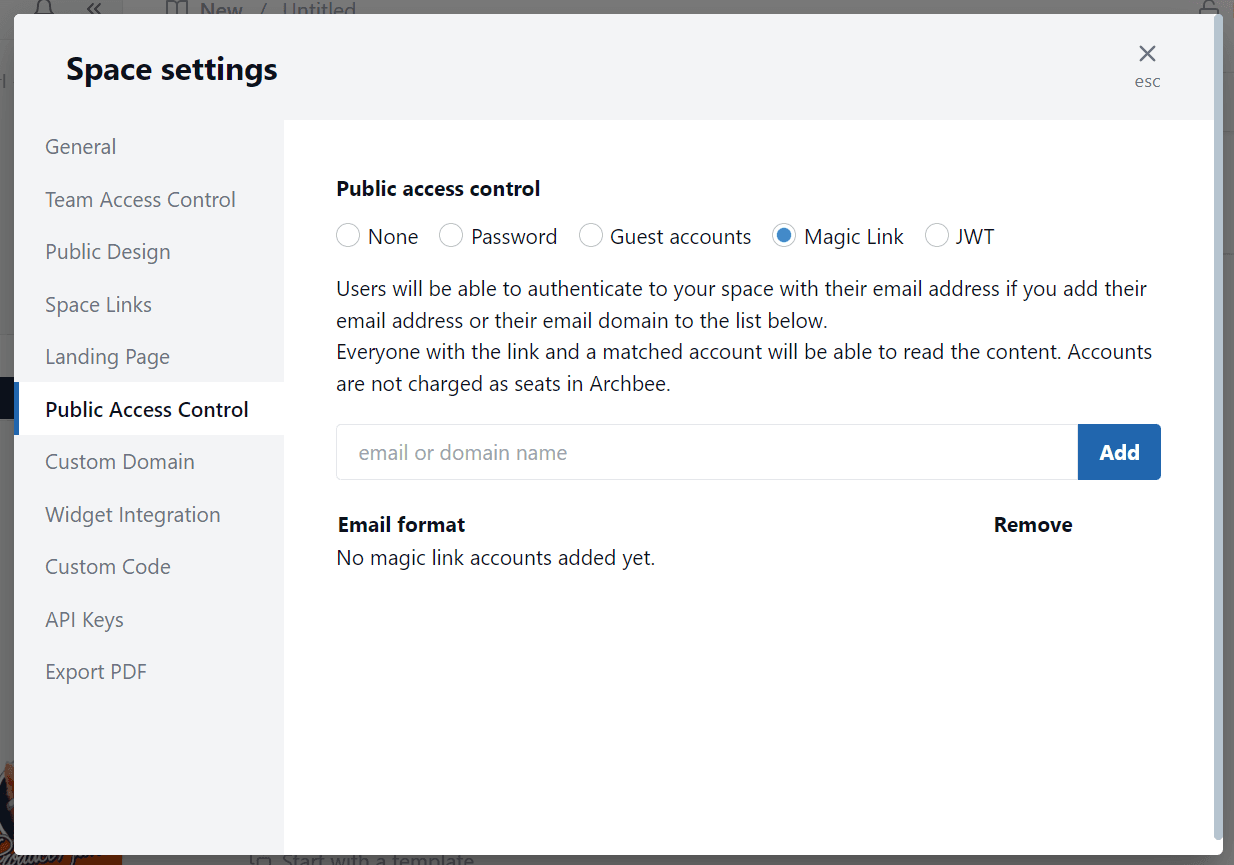
Source: Archbee
You can get direct feedback by giving customers access to some of your knowledge and allowing them to ask questions or give suggestions. The input will help you make your product and wiki better because you’ll see which points are unclear.
Preserving Business Knowledge
On top of being great for collaboration, internal wikis help you preserve knowledge.
You may know your team’s or even company’s standard procedures, but you’re most likely not using the majority of them daily, if at all. Therefore, you know the theory but don’t have the knowledge of the employees who put the ideas into practice daily.
An internal wiki will help you capture that so-called tribal knowledge, which is something your employees learn through working. When you have an internal wiki, your employees leave their unique knowledge with you once they leave the company.
Seventy percent of employees agree that it takes a lot of time and money to replace the knowledge that experienced employees take with them when they go.
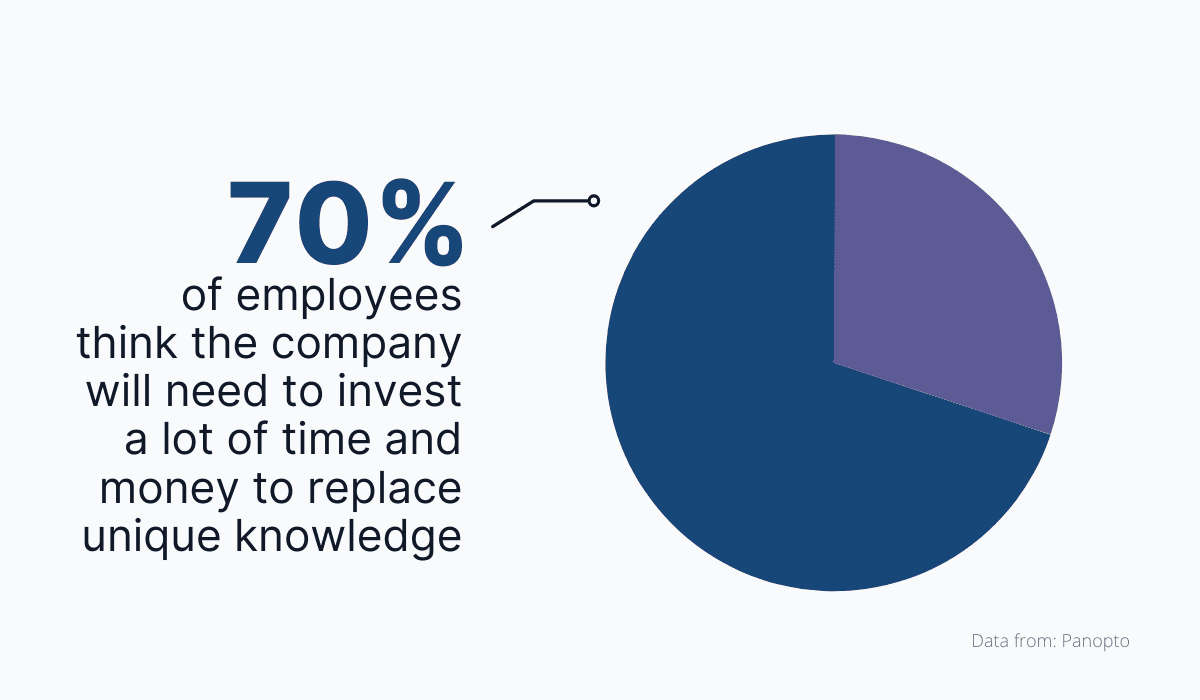
Source: Archbee
The pandemic has disrupted many things, including the workplace. In 2021, so many workers had voluntarily quit their jobs that the movement was dubbed the “Great Resignation.”
When all those workers quit, they didn’t just leave a position to fill, they left a knowledge gap behind as well. Why cry over spilled milk when you can invest in a good wiki and encourage your team to share their insights while they are still with you?
Organized Structure
If you take the time to create a detailed and informative internal documentation, your employees will always know where to look for information.
But, the key is not just to upload all these files to your business wiki software and call it a day. Make it easy for them to navigate your wiki by dividing the knowledge into sections and subsections.
Explain your processes using images, diagrams, videos, and anything else that can help you simplify complex business data.
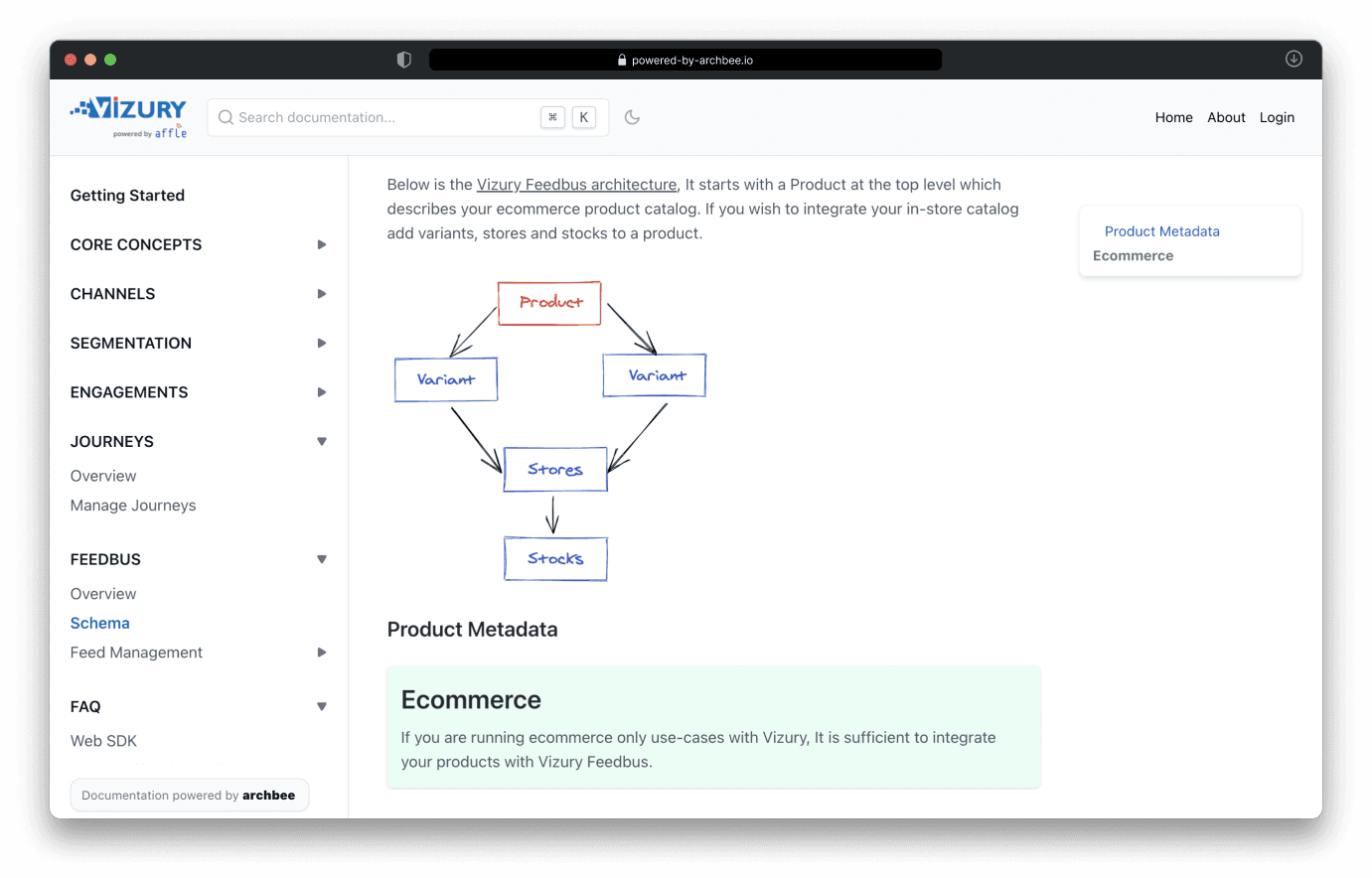
Source: Archbee
When creating the wiki, keep your team in mind.
Where would they expect to find the data in question?
Find a structure that works best for the teams involved and organize the information in the same way throughout your wiki to help people easily navigate and find data.
How to Create an Internal Wiki
Creating a wiki takes effort and time, but the benefits most definitely outweigh any argument against it.
So, now that you’re sure you want to have one, let's see how you can create a detailed internal wiki for your organization.
1. Set Up Your Information Architecture
Information architecture (IA) helps your readers understand what they’re looking at, what they will find, and where.
Abby Covert, an information architect, describes IA as “the way that we organize something to make sense as a whole.”
Therefore, you need to have an overview of all the information you’re sharing, i.e., the whole, if you want to have a good IA. Only then can you organize all this information to make sense and encompass every section, subsection, and data.
When creating an overview of the shared data, companies use knowledge graphs, diagrams, and flowcharts, all available through good wiki software.
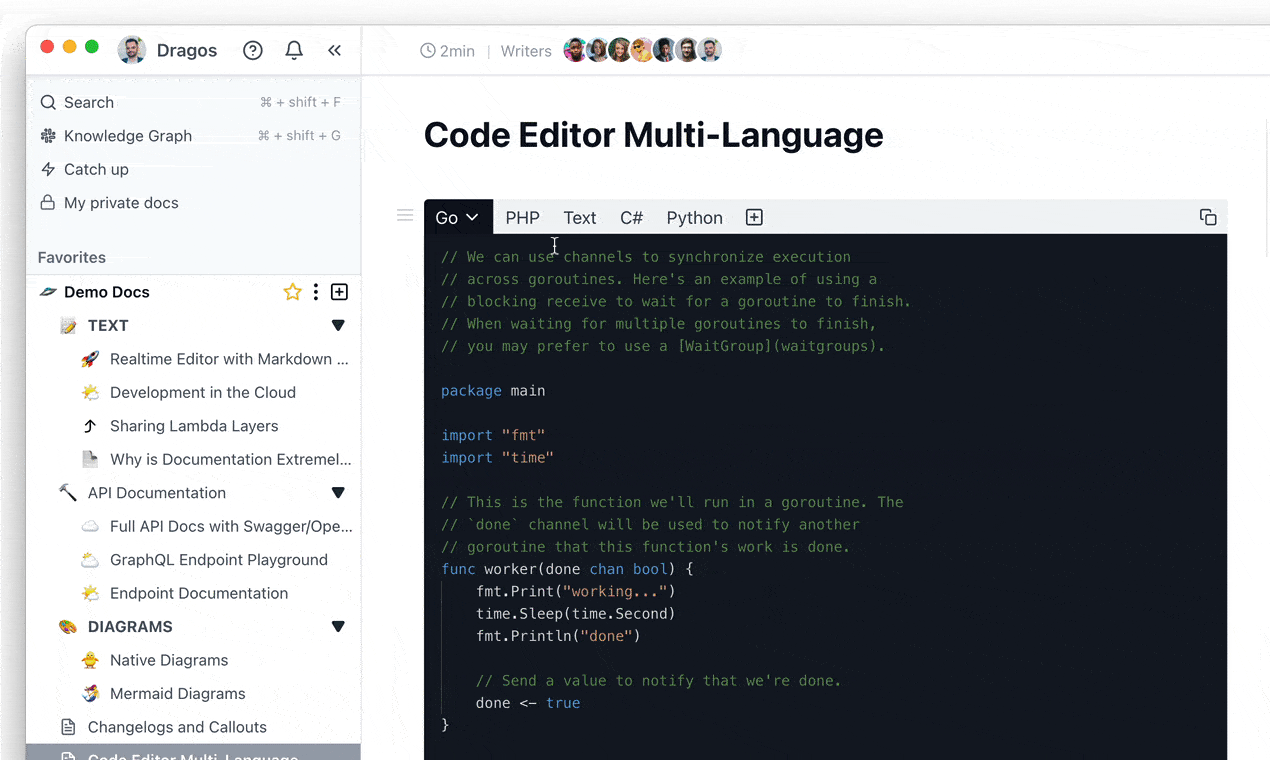
Source: Archbee
For a good IA, you need to explain how you categorize and label the information and how users can navigate and search through your documentation base. If you fail to explain any of these points, the IA won’t make much sense.
So, hire an expert or try to do it yourself, but keep in mind that you have to have a clear overview of everything you will include in your wiki and understand how all these things interconnect.
2. Import or Add Content
Once you know how to organize the data, it’s time to create or upload it.
If you already have your procedures and processes written down somewhere, use software that lets you easily import them from your computer, regardless of the document type.
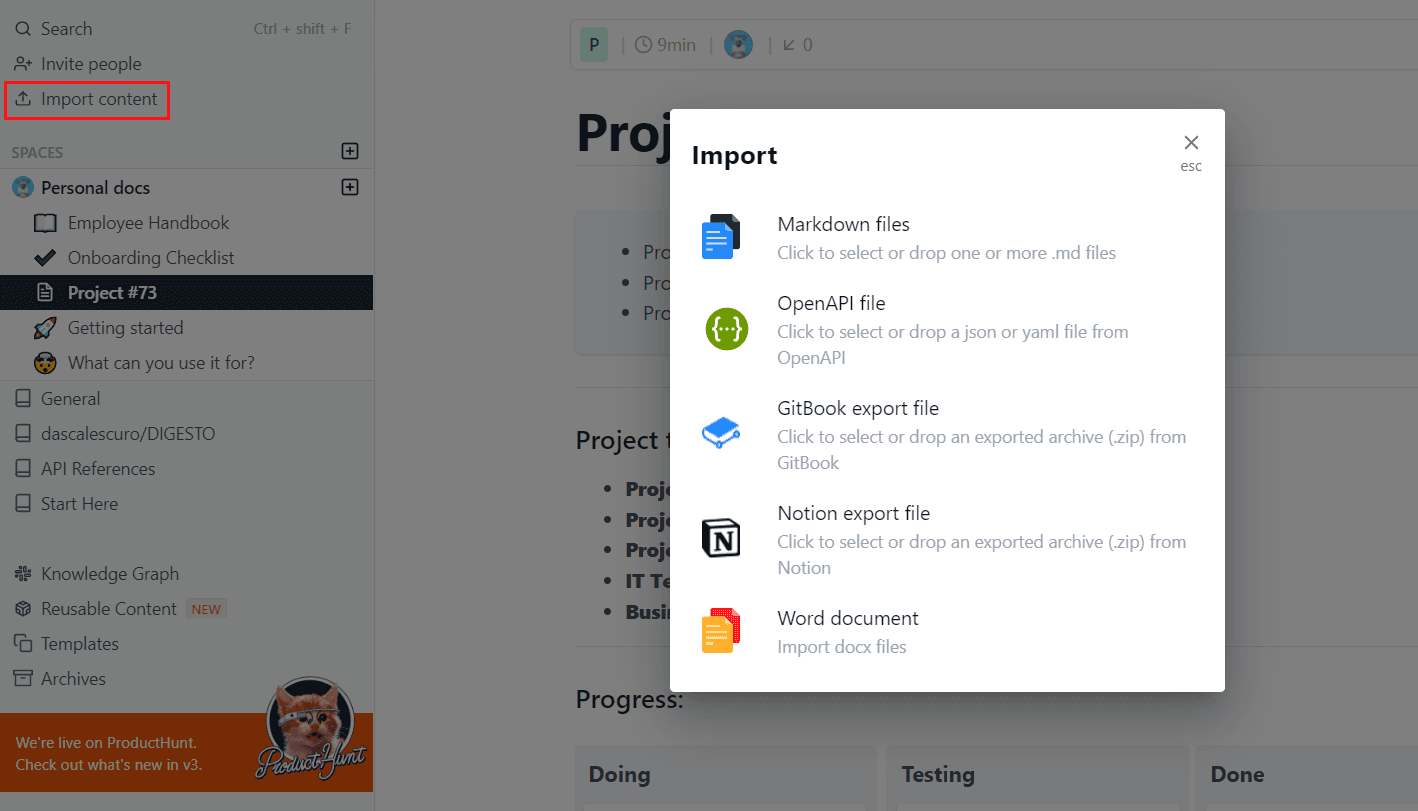
Source: Archbee
Archbee, for example, allows imports of markdown, open API, GitBook, Notion, and Docx files, thus ensuring you can quickly gather all your company info in one central location.
With good IA and imported files, it will be easy to spot which docs are missing. If you’re just starting to document your processes, you’ll probably have a lot of poorly covered points, which means you’ll have to write new articles to cover the blind spots.
Because of this, your software should make it easy to import content but also to create it. Quality wiki software should be able to help you with that as well.
For example, Archbee features an intuitive editor with more than 20 custom blocks to choose from, making it easier than ever to compose and upload knowledge articles for your wiki.

Source: Archbee
Depending on the type of app you choose, you’ll be able to turn a file into more than just a page filled with words.
Adding video content, images, graphs, and other visual content will help break down the information and improve the overall readability of the documents.
3. Set up Integrations
Most software will let you integrate with other apps and efficiently use the features of one tool when working on another.
Since the goal of your wiki is to help team members be more productive by offering company knowledge, integrations are a must.
Integrating the apps you already use with your new wiki software will speed everything up and ensure that everyone stays up-to-date.
For example, if your team uses Slack in combination with Archbee, you can get an notification when a new member joins the team, if someone uploads, edits, and moves a document, or if an employee publicly shares a file or space.
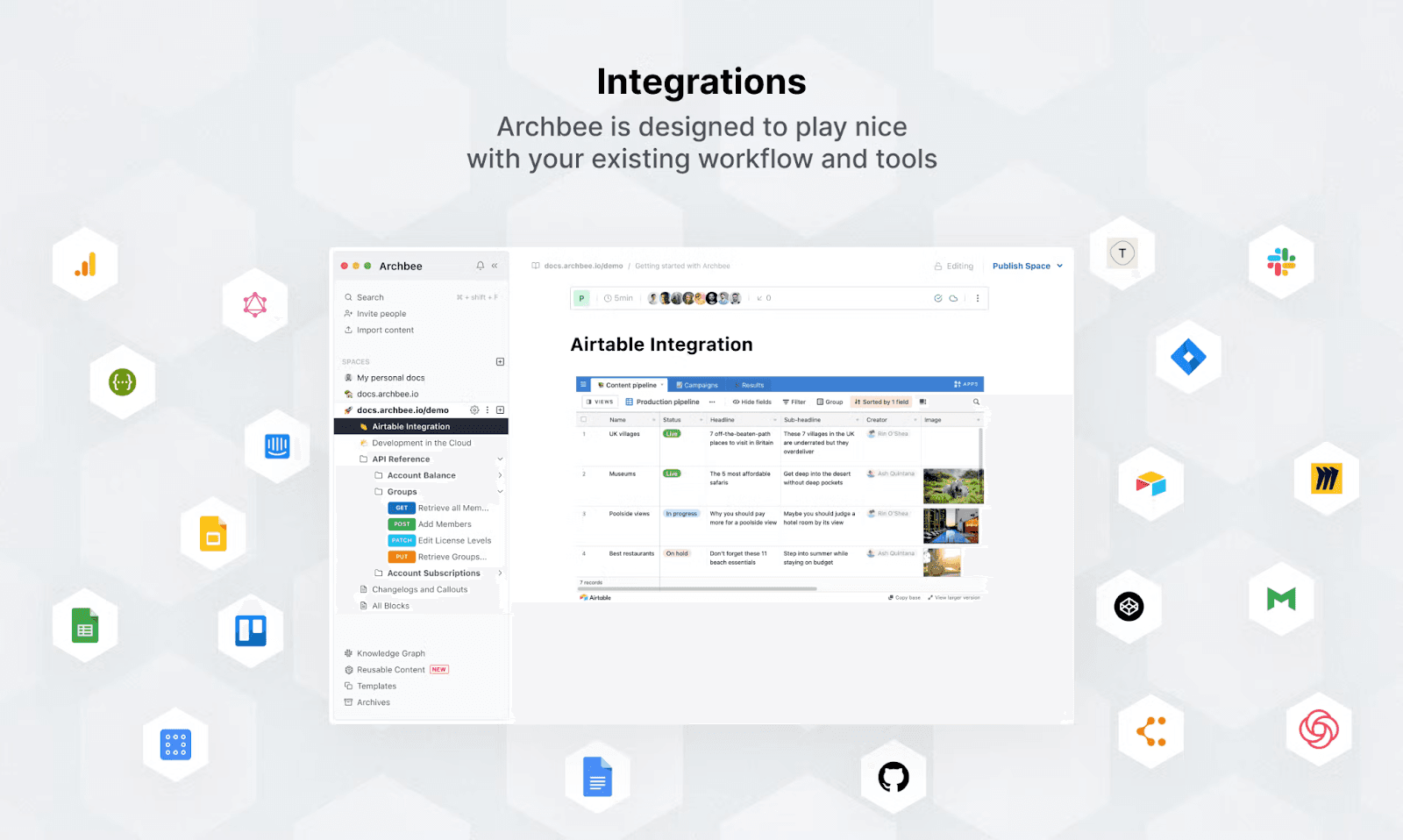
Source: Archbee
That way, the team stays updated straight from the app they use for communication without manually checking for new entries daily.
Without these in-app notifications, the employees might miss the update or see it only when they visit the page, which might take a while.
4. Share Your Wiki With Your Team
Finally, once everything is in order and set up, you should give your team access to your brand new wiki.
Allan Caeg, Remote Compass’s Chief Editor, says a successful wiki is one you can easily edit and access. With the right software, you’ll be able to do both.
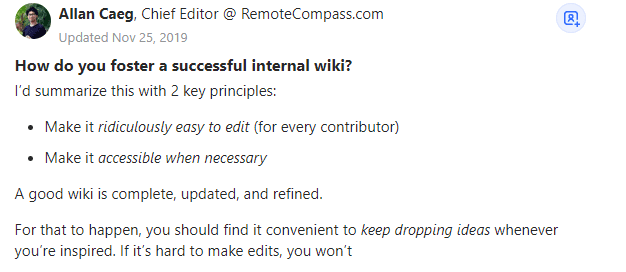
Source: Quora
Most online doc apps allow you to share access with the team, but you need to go a step further if you have a lot of team-related or confidential data that you don't want everyone to see.
With Archbee, you can choose to share collections with people in or outside of your organization.
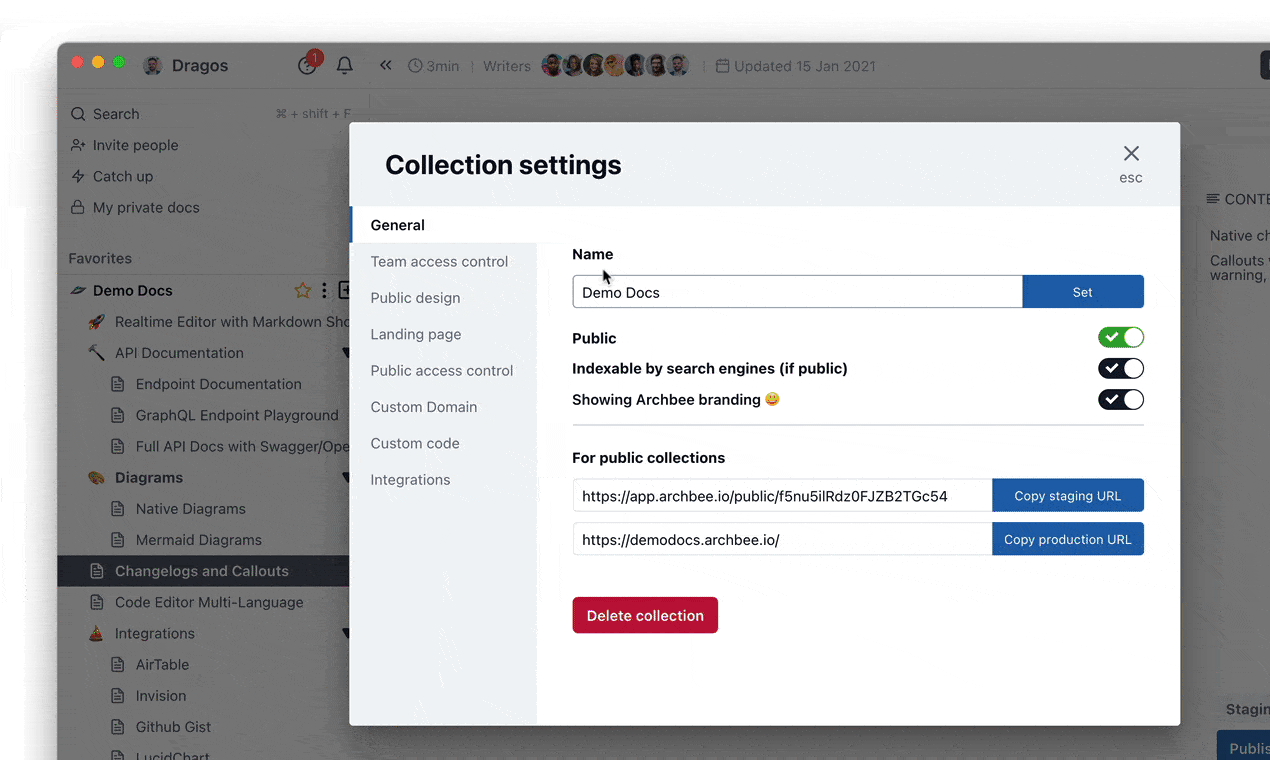
Source: Archbee
Suppose you want your clients to have access to product documentation but don’t want them to see your team’s schedule or company processes.
In that case, you’ll be able to share specific documents or spaces with them by sending them a link that works with their email, adding them to the file, or setting up a password.
You can apply the same rules to your team, especially if using your wiki to update HR files like employee reviews. This data is something your team leaders, managers, and the HR team should see, but not all the employees or external shareholders and users.
Conclusion
An internal wiki lets your employees understand more about your company, their work, and your product while promoting collaboration, knowledge-sharing, and keeping your knowledge organized.
When you decide to create an internal wiki, choose the best software for your needs.
Remember that good software needs to let you make good information architecture, upload and write documentation, be compatible with the other apps you use, and allow easy access to employees and users.
Frequently Asked Questions
An internal wiki is a private, collaborative website where your team documents, organizes, and continuously updates company knowledge. Unlike a traditional knowledge base that’s usually maintained by a few editors, a wiki invites broad participation—anyone (with the right permissions) can create, edit, comment, and improve content. Think of it like a company-only Wikipedia with: - Open collaboration and version history - Fast search across pages, attachments, and embeds - Clear permissions so the right people see or edit the right content - A flexible structure for teams, projects, and processes



